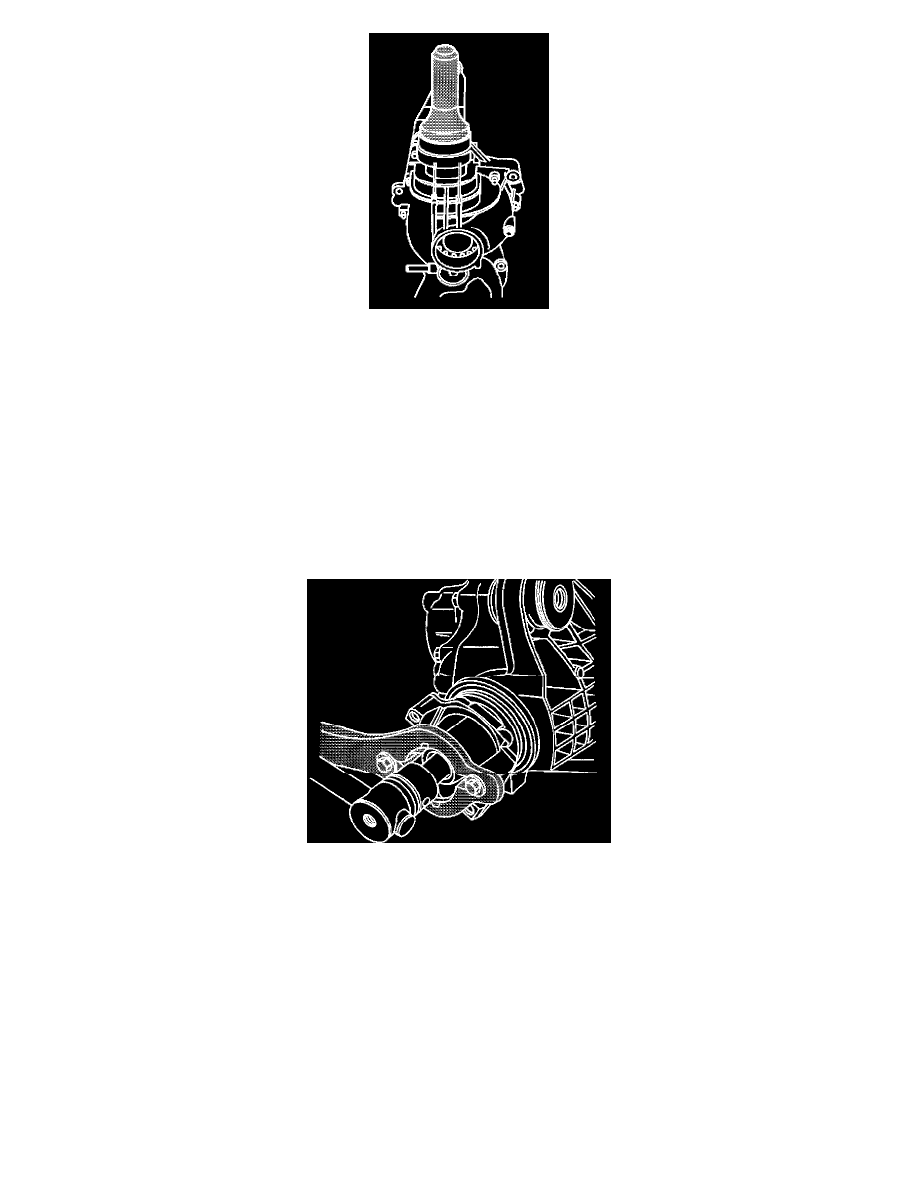Rainier AWD V8-5.3L VIN P (2004)

7. Install the oil seal by doing the following:
7.1.
Install the differential carrier assembly into a vise. Place shop towels in the vise in order to protect the differential carrier assembly.
7.2.
Position the oil seal in the bore.
7.3.
Install the J 33782 over the oil seal.
7.4.
Strike the J 33782 with a hammer until the seal flange seats on the axle housing surface.
8. Install the pinion gear, with the inner pinion bearing and the new collapsible spacer, into the differential carrier case.
9. Apply sealant, GM P/N 12346004 (Canadian P/N 10953480) or equivalent, to the splines of the pinion yoke.
10. Install the pinion yoke.
Notice: Do not hammer the pinion flange/yoke onto the pinion shaft. Pinion components may be damaged if the pinion flange/yoke is hammered onto
the pinion shaft.
11. Seat the pinion yoke onto the pinion shaft by tapping it with a soft-faced hammer until a few pinion shaft threads show through the yoke.
12. Install the washer and a new pinion nut.
13. Install the J8614-01 onto the pinion yoke as shown.
Notice: Refer to Fastener Notice in Cautions and Notices.
Important: If the rotating torque is exceeded, the pinion will have to be removed and a new collapsible spacer installed.
14. Tighten the pinion nut while holding the J 8614-01.
^
Tighten the pinion nut until the pinion end play is just taken up. Rotate the pinion while tightening the nut to seat the bearings.
15. Measure the rotating torque of the pinion using an inch-pound torque wrench.
^
The rotating torque of the pinion should be 1.0 - 2.3 Nm (10 - 20 inch lbs.) for used bearings or 1.7 - 3.4 Nm (15 - 30 inch lbs.) for new
bearings.
16. If the rotating torque measurement is below 1.0 Nm (10 inch lbs.) for used bearings or 1.7 Nm (15 inch lbs.) for new bearings, continue to tighten
the pinion nut.
^
Tighten the pinion nut, in small increments, as needed, until the torque required in order to rotate the pinion is 1.0 - 2.3 Nm (10 - 20 inch lbs.)
for used bearings or 1.7 - 3.4 Nm (15 - 30 inch lbs.) for new bearings.
17. Once the specified torque is obtained, rotate the pinion several times to ensure the bearings have seated.
Recheck the rotating torque and adjust if necessary.
